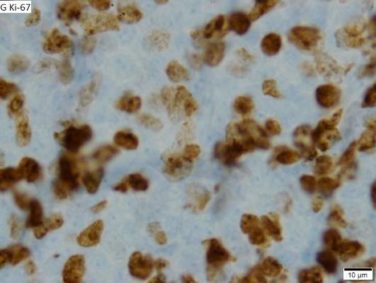Introduction
Often, it can be difficult for providers to fully understand why children may be presenting with behavioral problems that appear to be occurring principally in specific environments. Parents may bring their children for an evaluation based upon reports they are receiving from teachers and other school personnel who may be observing more prominent oppositionality, social struggles, troubles following instructions, and frustration intolerance than the parents are experiencing in the home. Additionally, youth may begin to display school refusal and voice strong negative feelings about school. Although at face value, these problems may indicate potential diagnoses like oppositional defiant disorder and attention-deficit/hyperactivity disorder, one also should consider other underlying “non–mental health” issues that could greatly influence school success and present with a range of emotional and behavioral struggles.
Case Summary
Brynn is an animated, social, and strong-willed 4 year-old girl who experienced delays in her receptive and expressive language that prompted her engagement in early intervention around 18 months of age. She and her family continued to receive developmental services over the next few years and, at the age of 3 years, because of ongoing speech and language challenges, she was enrolled in a preschool individualized education program. In her program, Brynn participates in an array of specialized instruction, but her educators comment that she is not making expected academic progress and has troubles “holding onto information,” focusing, and participating meaningfully with peers in a consistent manner.
At times, Brynn can be impulsive, aggressive, and volatile – behavioral traits that mom denies are occurring in the home. A diagnosis of an autism spectrum disorder has been ruled out, and Brynn’s hearing and vision are tested to be normal. Brynn’s mother feels confused by the reports she’s getting from school; “I want Brynn to be happy,” she shares. “I needed special help to read in high school, and I worry about her future.”
Discussion
Learning disorders (or learning disabilities, using educational terminology) are defined as neurologically rooted problems that affect academic achievement via the receiving, processing, or communication of information. They occur in 1 in 10 children ( Pediatrics. 2007 Feb;119 Suppl 1:S77-83 ) and can present with specific problems in reading, writing, and mathematics while having considerable influence on related aptitudes in language, social ability, self-help, and motor functioning. Dyslexia – a developmental reading disorder – is the most common type of learning disorder (LD). Although it’s not clear what causes learning disorders, there are several factors that are thought to play a role in their development, including hereditary factors and problems with pregnancy and birth. Having developmental delays also can place children at risk for having later learning problems that may not be identifiable until a child enters a more structured learning environment. At clinical visits during the preschool years, particularly with a child who may have had earlier developmental concerns, the pediatrician should inquire about a range of “warning signs” that may indicate a need for additional screening and evaluation for specific learning issues.
The National Center for Learning Disabilities offers a range of practical tips for pediatricians who may want to further explore parental and teacher concerns by asking questions related to literacy, writing, language, and social-emotional skills, attention, and gross and fine motor movements in a developmentally informed manner. Further exploring Brynn’s mother’s comments in the context of her daughter not progressing in school revealed a history of difficulty retaining new words, troubles learning colors and shapes, challenges remembering rules, and particular difficulties engaging in group play with other 4-year-olds – all potential signals for a learning disorder. This alerted educators that she may indeed be struggling with issues beyond that of an enduring speech-language delay.
With the suspicion that Brynn was presenting with signs and symptoms suggestive of a learning disorder, her family was educated about the Individuals with Disabilities Education Act , and it was recommended she receive a comprehensive psychoeducational evaluation to further assess her intellectual profile, academic achievement, social functioning, and performance in the classroom using standardized tools. These tools, among other objectives, can help the child’s team offer a more definitive LD diagnosis while informing the potential development of special education supports and assessing for an intellectual disability. The DSM 5 indicates that LD diagnostic criteria are to be met based upon a clinical synthesis of history, school reports, and psychoeducational assessment.
It’s been long established that children with learning problems frequently have co-occurring emotional and behavioral troubles ( Arch Dis Child. 1974 Apr; 49[4]:249-56 ), many of which also should be considered as differential diagnoses in a child with school problems – as such, a complicated interplay of learning disorders and internalizing and externalizing conditions is often appreciated in school-age children with academic difficulties. At times, learning disorders can lead to emotional distress and could also be misdiagnosed as primary emotional and behavioral challenges. Specifically, children with learning problems are at risk for struggling with low self-esteem, loneliness, and anxiety, which also can be associated with mood disorders, school dropout, victimization, and engaging in substance use.
In Brynn’s case, the results of the Teacher Report Forms and Child Behavior Checklists were reviewed, revealing some evidence that she was experiencing clinical-level problems with her attention, but a discrepancy was noted between the teacher and parent report (the teachers endorsing more clinically significant symptoms). Although co-occurring attention-deficit/hyperactivity disorder (ADHD) is not uncommon in children with a learning disorder ( Pediatrics. 2011 Mar;127[3]:462-70 ), we did not feel Brynn met criteria for this. We elected not to provide an ADHD diagnosis but are mindful that her attentional concerns should be closely monitored over time; a diagnosis may be more relevant in the future, perhaps influencing Brynn’s eligibility for services and treatment planning. Furthermore, comorbidity with ADHD is predictive of worse mental health outcomes, compared with learning disabilities presenting without ADHD.
Clinical Pearl
Pediatricians should consider the possibility of a child having a learning disorder in youth who display risk factors (family history of learning concerns, atypical development, prematurity, etc.) and have problems at school. Such problems may be presenting with emotional and behavioral symptoms that could mask a child’s primary learning impairments. Learning disorders also frequently co-occur with psychiatric conditions, but engaging children in effective interventions (school-based supports) could potentially attenuate the risk for the development of mental health problems. Also, promoting emotional wellness and fostering self-worth may improve the academic performance of children with learning disorders.
Dr. Dickerson, a child and adolescent psychiatrist, is an assistant professor of psychiatry at the University of Vermont, Burlington. He is the director of the university’s autism diagnostic clinic. Dr. Dickerson said he had no relevant financial disclosures. Contact Dr. Dickerson at pdnews@frontlinemedcom.com.





